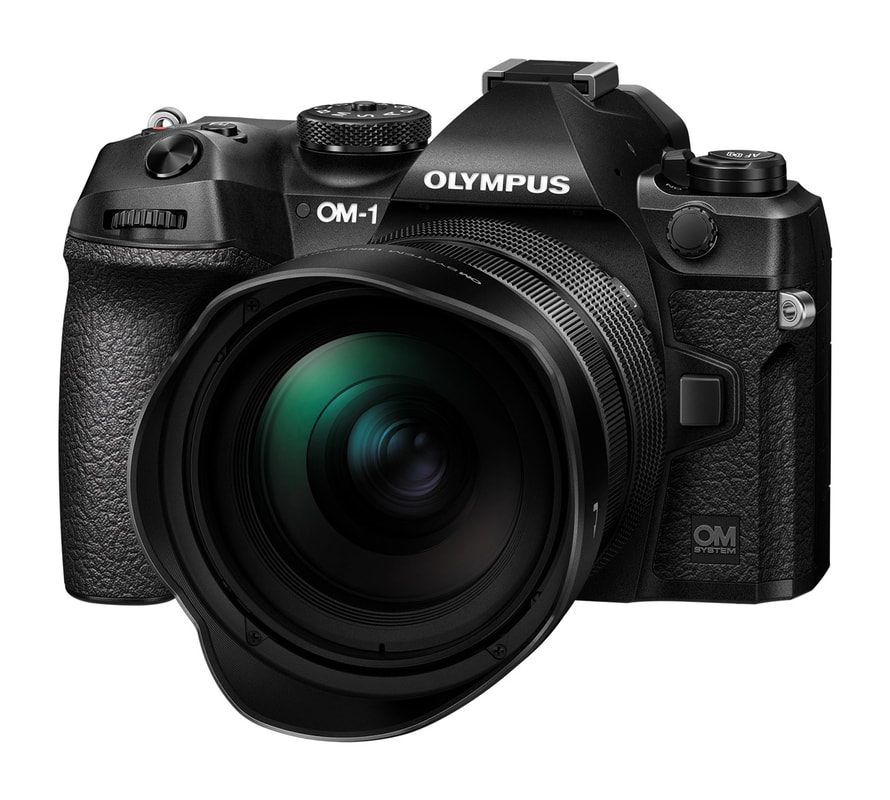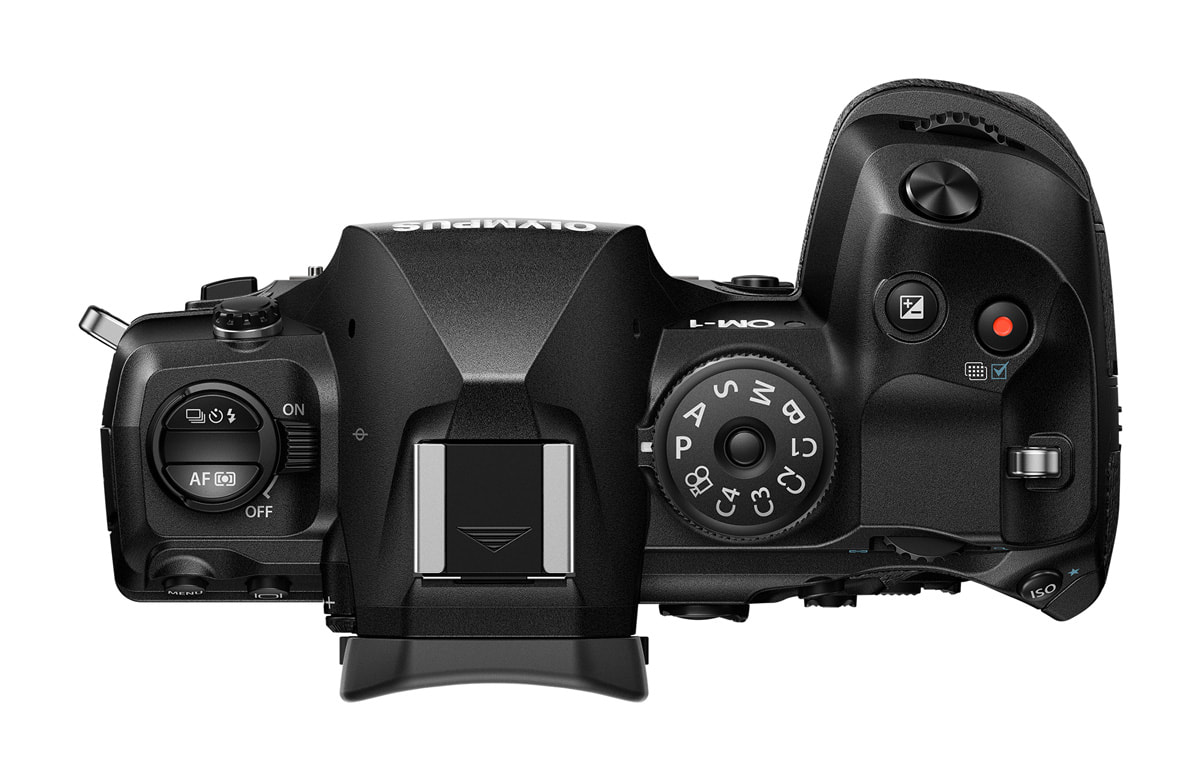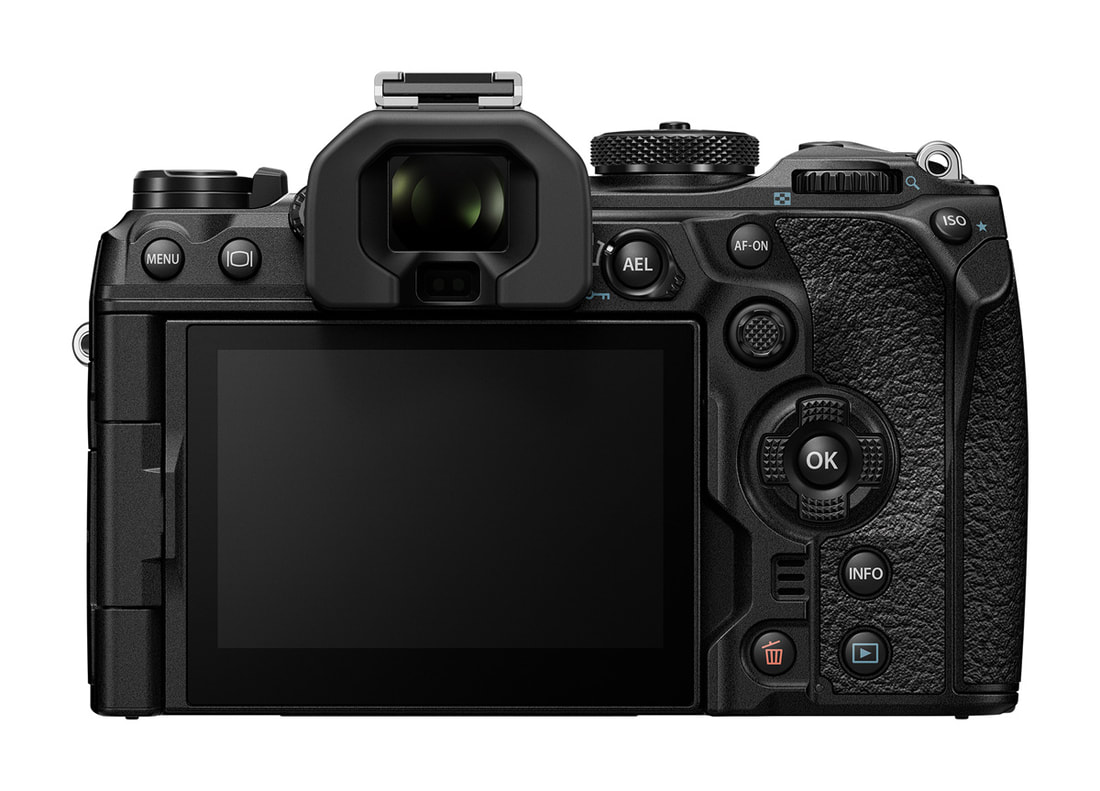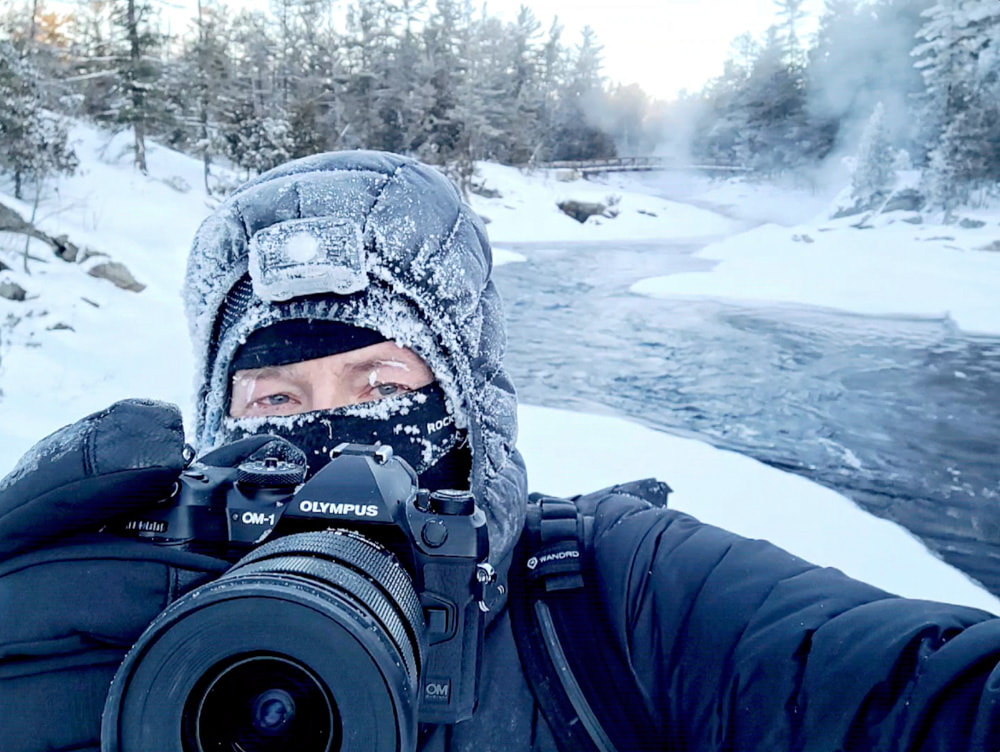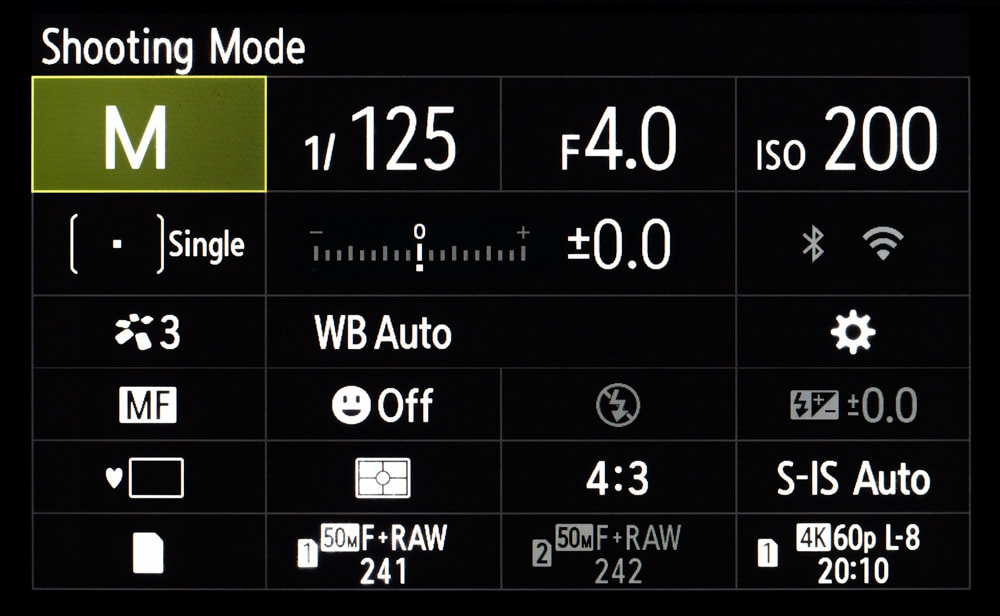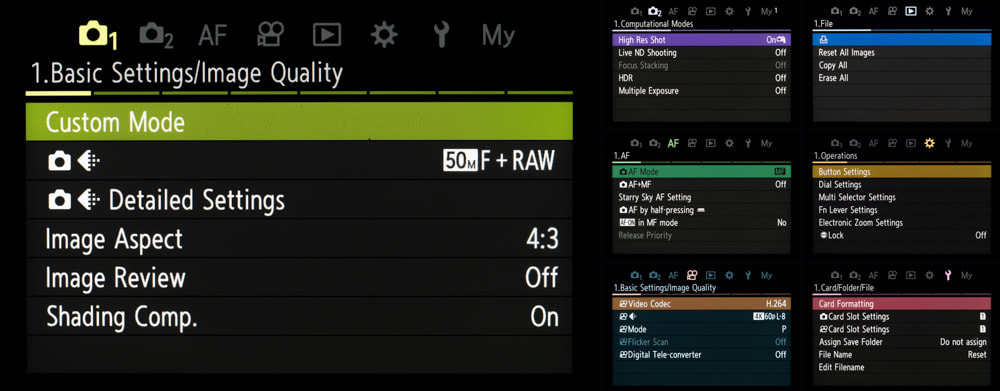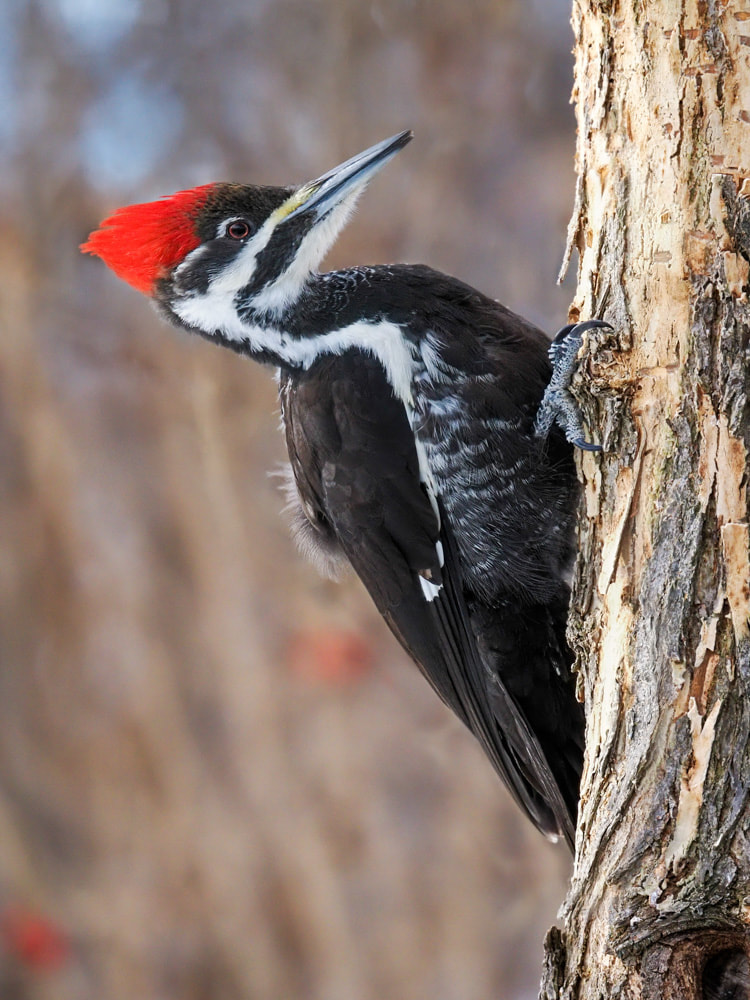|
Disclosure: I am an OM System Ambassador and as such receive compensation from OM Digital Solutions. Although compensation was paid for this review, I endorse their products because I truly believe in the quality of their gear. In 1972 Olympus released the OM-1. It earned high praise as the smallest and lightest SLR camera of its time and included numerous innovations in its build and design. Fifty years later the OM-1 is back. The name may be the same, but after that the differences are innumerable. It still bears the Olympus name, but the new OM-1 is also branded with the OM System logo. It is the first camera released by OM Digital Solutions. I had the opportunity to shoot with the OM-1 prior to its release date. In using the camera there have been some real “wow” moments – things that excited me, and a few things where the camera didn’t quite hit the mark. Keep in mind that this isn’t a formal review, but rather my impressions of how the OM-1 stacks up, especially when compared to previous models like the E-M1 Mark III and the E-M1X. Design Being a long time Olympus shooter there is a real comfort to the camera. It has the same feel and handling as its immediate predecessor, the OM-D E-M1 Mark III (I have to admit I won’t miss typing out that rather long name). After a quick once over, I gave the camera a more thorough inspection and quickly discovered some subtle design changes. The OM-1 is just slightly larger and heavier than the E-M1 Mark III, and I mean slightly. The OM-1 is 19g heavier than its predecessor. That’s about the weight of 4 sheets of letter-sized paper. Not a significant difference at all. One of the more important changes is the design of the control dials and the shutter release. With the Mark III, the front and rear control dials are seated at the top of the body with the shutter release being in the centre of the front dial. On the OM-1 the dials are now seated within the housing with only a portion of each dial protruding. The shutter release is now on its own just above the front dial. This is the same design as the E-M1X. The mode dial and on/off switch are positioned in the same places as previous models with only slight changes to their appearance. Buttons, switches and dials all feel rugged, which is exactly what I would expect. In using the OM-1 it feels even more solidly built than the E-M1 Mark III, and that was a pretty tough camera. As for the buttons on the rear of the camera there is now a dedicated AF-ON button for those who use back-button focusing. All of the other buttons are in the same location as on the Mark III, but I did notice that they are slightly smaller. The joystick that I love on the E-M1 Mark III and the E-M1X is on the new OM-1, but is also a bit smaller. Under normal usage these smaller buttons aren’t an issue at all, but when you spend about 5 months of the year wearing winter gloves like I do it can make the camera a bit more challenging to operate. That said, since I’ve never found photography gloves that can handle -30°C I usually end up taking my thicker gloves off for a few seconds while I make setting changes. As such, the smaller buttons haven’t made a significant difference in my shooting situations. In speaking with an OM System rep, I was informed that having smaller buttons allowed for even greater weather sealing. I didn’t think that Olympus could improve on their weather-sealed body, but they did! The OM-1 is rated at IP-53. This is a higher rating than the IPX1 on the Mark III. It is considered even more dust-proof, splash-proof and freeze-proof. I can definitely attest to how freeze-proof it is. I’ve had it out for hours in extremely cold conditions and it doesn’t skip a beat. It lasted longer than I did. The first real concern that anyone planning on upgrading to the OM-1 might have is the fact that it uses a different battery. Yes, I groaned, too. But, in using the new BLX-1 battery, which is slightly larger than the older batteries, I was impressed with how long it lasted. I only have one battery at present and I haven’t come close to draining it while out shooting in the cold. During one particularly frosty night at -28°C, I was out for 3 hours of shooting and the battery was still at 72%. The battery is rated at 520 shots, compared with 420 for the E-M1 Mark III. These might be the official ratings but I’ve already had a couple of shooting sessions where I’ve put over a thousand images on a card and still had plenty of battery life left. The camera comes with a USB cable for charging, and is fully functional during the process. This is a welcome change since you can be powering up in the field and still have full use of the camera. The OM-1 also has a new battery grip available. The HLD-10 will hold one extra battery and has the joystick, AF-ON, ISO and exposure compensation buttons, along with the control dials and shutter release. I find this particularly useful when photographing wildlife. First Shots Alright! The battery is charged, the memory cards are formatted. It’s time to start shooting. For my first test I decided to go to a small range light about 30 minutes from where I live. I was hoping for a colourful sunset, but instead I got clear skies. Well, so be it. I just wanted to see what this camera could do. During this first outing I had absolutely no information on the inner workings of the camera, but being a former science teacher, I was happy to engage in some self-discovery. My first discovery was the new EVF. And it’s awesome! As much as possible I prefer to compose my images using the electronic viewfinder rather than relying on the LCD. The OM-1 is outfitted with a stunning new EVF – a 5.760K dot OLED. This is more than twice the resolution of the E-M1 Mark III and the E-M1X. It provides a noticeably cleaner and more realistic image for composing and reviewing your shots. The layout is also different than the E-M1 Mark III. The main settings are lined up underneath the image, rather than being superimposed on top of the scene you are shooting. The histogram is now in the top left of the viewfinder while the levels are centered in the image. As with previous models, the Info button allows you to cycle through 4 familiar viewing options; image only, main settings, settings + histogram, settings + levels. The rear 3” LCD also provides greater resolution – 1.620K dots vs. 1.040K. The layout is slightly different than the EVF, but provides the same key information. For my first shot I tried a hand-held focus bracketed image of the range light with the sun shining through some ice. My next discovery was the processing speed. The focus stacking process was fast. Much faster than previous models. But more on that later. After my first set of images of the range light I decided to stick around and shoot well after sunset. I do a lot of low light photography so I was curious as to how those images would turn out. I usually review my images in the viewfinder rather the LCD and with a quick look I was impressed, but the real image quality test would have to wait until I got home. The Inner Workings When I uploaded my first set of images and had a closer look I was truly impressed with the image quality. The photos were incredibly sharp, with excellent colour tonality. There was practically no noise, even in those photos shot during the blue hour at moderate ISOs. Then I looked at the size of the image and realized that it was 20 MP. This was a disappointment. I want to emphasize one word in that sentence – was. After spending a few more days shooting with the OM-1 and getting some of the specs for the camera I am no longer disappointed. This is a completely new sensor with some incredible processing power behind it. I also had to remind myself that I’ve been regularly printing images for clients up to 36” x 48” and even larger at times. I had no doubt that I could easily print these first few photos with stunning results. Let’s take a look at what’s inside the new OM-1. Sensor – The OM-1 has a new 20 MP Cross Quad Pixel AF Stacked BSI CMOS Sensor – now there’s a mouthful. As a back-side illuminated sensor it provides much better noise handling – 2 stops better noise performance than the E-M1 Mark III and 1 stop of improved dynamic range. As such, the OM-1 also has a greater ISO range – 200 to 25 600 with an extended range to 102 400. Processor – The OM-1 is equipped with the new TruePic X processor. The speed of the processor is quite impressive. Olympus has been a leader in computational photography, but that has always required processing the image after the shot was taken. In testing out focus stacking, LiveND and the high res feature the processing speed is considerably faster than the E-M1 Mark III. For example, in one side-by-side comparison the E-M1 Mark III took 20 seconds to process the high resolution image. The OM-1 had it processed in only 5 seconds – 4 times faster! There have been many times where I wouldn’t use high res during a sunset because of this wait time. The light was changing too quickly. That certainly isn’t going to be as big an issue with the OM-1. Auto-focusing – The new sensor and processor also translates into much improved auto-focusing. The cross quad pixel AF now means there is 100% AF coverage in the frame with a total of 1053 phase detection cross AF points. That’s right, over 1000 focus points covering the entire frame! Auto-focusing is faster and more accurate, but with so many focus points it is important to select the best option for the subject in question. The focus patterns are similar to what Olympus shooters will be used to, except that now the single point is much smaller. But even that “single point” actually has 4 focus point within it. Users can also create several custom focus patterns.
Waiter, Could I Have Another Menu Please! Speaking of facelifts, the OM-1 has a new menu system. Yay! The new menu is quite slick and far more intuitive. At first glance it may appear that the designers just switched from a vertical to a horizontal orientation of menu items and added a splash of colour. But it definitely goes deeper than that. Many items have moved to areas of the menu that make far more sense. For example, Camera 2 is now dedicated solely to computational photography. Navigating the menu has also changed. After pressing the Menu button, the front dial is used to move between menu headings while the rear dial is used to navigate from page to page within a heading. The arrow pad is used to move to individual menu items on a page and then, to activate that item, the OK button is pressed. Navigation is quite intuitive except for the fact that my muscle memory was getting in the way. In previous iterations the right arrow key was pressed to enter a menu item. Now it is just the OK button that is used to dive deeper, which makes perfect sense. It took a few days to get used to it, but I have to admit that it is far nicer layout than on older models. Another nice feature in the OM-1 is that specific menu options can be directly accessed from various function buttons. For example, since I regularly use Focus Stacking I reprogrammed the AEL for that feature. Pressing that button will turn the feature on and off, but holding the button down for about 2 seconds gets you right into the Focus Stacking menu so you can quickly make changes. This is a great change. Another feature that I really like is that the menu now shows up within the viewfinder. As someone who needs reading glasses (man, it sucks to get older) I appreciate that I can quickly make setting changes without having to take my eye away from the EVF. This option was available on the E-M1 Mark III, but not without some effort. Now it is the default setting. Computational Photography I recall when Live Composite was first introduced on the E-M1. I thought it was a gimmick and would have very little practical use. Boy, was I wrong. Olympus has been a pioneer of computational photography, allowing us to see the world in ways that other cameras just can’t. Several improvements have been made to these features. LiveND – The LiveND feature has been extended to 6 stops (ND64) from the original 5 stops on the E-M1 Mark III. Live Composite – The Live Comp feature can now be used hand-held. I’m not about to try this for hour-long star trail shots, but capturing fireworks, lightning, or traffic trails should be quite possible without a tripod. More importantly for me is that the ISO range has been extended to 6400 compared to an upper limit of 1600 with previous models. Focus Stacking/Bracketing – No changes have been made to focus stacking or bracketing. The upper limit is still 15 and 999 shots respectively. Although not directly related to the feature, the fact that the AF points have 100% coverage will make this feature easier to use under many circumstances. High Resolution Shooting – Accessing the high res feature has been made a lot easier. When shooting stills the video record button has now been mapped to enable high res photography. As a landscape photographer I appreciate how quickly I can get in and out of this mode. Some additional controls have also been added. The hand-held high res shots can now be recorded at 25 or 50MP + RAW. Tripod high res shots remain at 80MP, but the option to shoot at 25 or 50MP as well is now available. One great addition is that a delay option has be added. In handheld shooting you can program a wait time of 1/8s, 1/4s, 1/2s or 1s. In tripod mode the delay can go all the up to 30s. As well, to quickly switch from hand-held to tripod mode press the record button and turn one of the control dials. The high res menu pops up and you can make quick changes to your settings. Regardless of the feature, the one improvement that applies to all of them is processing speed. For example, OM System states that the processing speed for high res shooting is 2.5x faster than the E-M1 Mark III, but based on my experience I’ve found it to be even faster than that. Subject Detection One of the features that I was most eagerly waiting for in the OM-1 would be to see if intelligent subject detection would be added. I’d come to rely on the bird detection and tracking on the E-M1X, so I was pleased to see that this feature has now been included in the OM-1. But wait, there’s more! Along with trains, planes and automobiles (man, I miss John Candy) and birds, there is now animal detection, specifically cats and dogs. As someone who occasionally photographs wildlife, I was hoping for animal detection that would include a wider range of critters, but I have it on good authority that it works incredibly well on foxes, wolves and even elk. During my trial run with the new camera I’ve had very few opportunities to shoot wildlife. I was able to capture a few birds (it worked incredibly well – even better than the E-M1X), but what really impressed me was when I tested it out on my husky. His name is Squish, and man, can he run fast! I had him run from about 100m away and I just kept my finger on the shutter as he raced towards me. Without exaggeration almost 100% of the shots were tack sharp. I used both the mechanical and electronic shutter and got equally good results. You may be thinking, “but, it’s only a dog”. Well, if any other animal comes charging towards me at that speed, I’m dropping the camera and running for safety! Now, I can’t wait to use it with fox kits in the spring. Final Thoughts and Images
The OM-1 now takes its place as the flagship camera for the new company. My personal history with photography goes almost as far back as the original OM-1. In 1976, when I was just 12 years old, I purchased the OM-1n and have been shooting with Olympus ever since. At the time of this writing I’d been using the new OM-1 for about 3 weeks. It has truly rekindled my love for the craft. The camera does not make the photographer, but let’s face it, like with almost all creative pursuits, the better the tools, the better the results. And this camera has given me fantastic results. From the incredible image quality, to the new EVF; from the lightning fast AF, to the increased processing speed, the OM-1 has exceeded my expectations.
25 Comments
Peter Baumgarten
2/15/2022 10:22:18 am
Thanks, Arvydas. Once we get to the new moon again I hope to get out and capture some nice MW shots.
Reply
John Sully
2/17/2022 09:53:42 pm
I've preordered, and am eagerly awaiting the camera in the new few weeks. But it is so damn cold around here this time of year that I'll wait until May for some MW shoots. I am really looking forward to it.
John Gilbert
2/15/2022 07:52:05 am
Nice writeup and awesome images. Your images with the 8-25mm lens are justification enough to buy this lens.
Reply
Peter Baumgarten
2/15/2022 10:23:03 am
Thanks, John. I absolutely love the 8-25. A fantastic lens.
Reply
2/15/2022 10:43:09 am
Thank you Peter. Very interesting and informative write up. Your description and obvious enthusiasm for this new Olympus camera encourages me to seriously consider checking out the new EM1. A new battery and grip is disappointing but understandable. Do you find that you need the grip with larger lenses like 300mm and 150-400? Mark
Reply
Peter Baumgarten
2/15/2022 10:47:30 am
Thanks, Mark. I've shot both with and without the grip. It certainly makes it easier to handle the 150-400. Adds some balance, and with the controls on the grip (joystick, etc.) it makes it easier to manage vertical shooting.
Reply
Morey Gers
2/15/2022 02:01:26 pm
How would you compare the feel of the new OM1 add on grip to the M1X? The M1X has a more solid feel and better ergonomics compared to the HLD9 on a 1mk2 or 1mk3, does the HLD10 come closer to that?
Gregory Lee Donoghue
2/15/2022 11:11:25 am
Would have liked to have seen how long the battery lasts while shooting BIF and C-AF. I'd expect the battery grip is necessary for active bird and wildlife shooters. The upgrades are indeed a marked improvement over the Mark lll and offers hope for a better M1X ll to come out in the future.
Reply
Peter Baumgarten
2/16/2022 09:05:59 am
I haven't tested it for that, but I've heard good reports from other wildlife shooters that they have gotten excellent results with the battery with active subjects.
Reply
Rob Phillips
2/15/2022 04:11:51 pm
Peter, thanks for your review of the new OM-1. I was hoping that it would work well with the 150-400F4.5. If it works even better than the EM1X I will be thrilled. I really enjoy viewing your photographs. I have ordered an OM-1 and grip today.
Reply
Peter Baumgarten
2/16/2022 09:07:16 am
Based on my limited shooting with the 150-400 and the OM-1 I find it much more responsive than with the 1X.
Reply
Christina Rose
2/15/2022 06:08:01 pm
Thank you Peter for your terrific in depth review of this fabulous Camera …. I will def be pre - ordering it .. and selling my OMD M1 and M111 ..
Reply
Peter Baumgarten
2/16/2022 09:08:06 am
Thank you very much. You're gonna love the new OM-1.
Reply
Martin kuivenhoven
2/15/2022 07:01:33 pm
Stunning pictures .. great to see the OM-1/ 8-25 in capable hands producing shots that were a stretch before by any means.
Reply
Peter Baumgarten
2/16/2022 09:08:30 am
The OM-1 and 8-25 are a great combo!
Reply
calvin john kendaall
2/16/2022 09:00:06 am
thank you for your report on this new camera
Reply
Peter Baumgarten
2/16/2022 09:08:48 am
Much obliged.
Reply
Tenzin
2/16/2022 12:53:25 pm
Great review! But the images! Breath taking! Thanks a lot!
Reply
Emery
2/16/2022 11:30:12 pm
Thanks for the in-depth review! I remember in your past review of the E-M1 Mk3 you weren't as enthused about the default HDR composite results and preferred to manually merge the individual shots in post. How does HDR mode in the O-M1 with the new sensor + processor setup compare?
Reply
Vasilis Pasiourtides
2/17/2022 05:27:30 am
Thank you for this review Peter. Fantastic photos. It's going to be a worthy upgrade from my EM1ii. Looking forward for some Milky Way shots you get!
Reply
Glen Fox
4/13/2022 01:45:19 pm
Thank you for your real-world review Peter. I hope you will consider writing up your customizations etc after you have had your new OM-1 for a while. It definitely is an amazing tool. Stay safe and well!
Reply
Mac
6/16/2023 12:46:44 am
Do you get paid more for a favorable review?
Reply
JOHN
4/17/2024 02:59:13 pm
Hi, This is a very Impressive and also very informative post. <a href=”https://lavoltage.com/ “>Outdoor lighting</a> enhances safety and ambiance, illuminating paths and creating a welcoming atmosphere. Thoughtful placement and energy-efficient fixtures can elevate any outdoor space.
Reply
5/15/2024 03:42:35 am
The quality of content on your blog consistently exceeds expectations, setting a high standard for others to follow. Bravo! Floodlights are the superheroes of outdoor lighting, casting a wide beam to brighten even the darkest corners. Your blog celebrates their power brilliantly!
Reply
Leave a Reply. |
AuthorPeter Baumgarten is a professional photographer and educator. He is also an Olympus Visionary and NiSi Official Photographer. Categories
All
|
